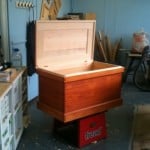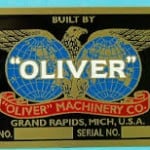dovetails and knifewalls?
Welcome! / Forums / Project Series / Dovetail Boxes / dovetails and knifewalls?
- This topic has 8 replies, 7 voices, and was last updated 10 years, 9 months ago by
Ken.
-
AuthorPosts
-
I’m on my third little dovetail box and consistently my dovetail and pin recesses are a hair shallow. I never have to pare the end-grain, I’m consistently planning the long-grain to get everything flush. (Does that make sense?) I do exactly as I see @paul-sellers doing, pressing the mating piece against a square, flushing the ends, and making a knife wall from there, but consistently get the same results. I’m very happy with the finished dovetails, but the inaccuracy is bothering me.
Is anyone having the same problem? Any suggestions are greatly appreciated.
Thanks!



The good news is that your errors are consistent, so if you pinpoint the error you should be alright in the future. Also, planing the long-grain is easier than planing the end-grain if you have to flush things up.
Why don’t you try setting a marking gauge to the thickness of your boards and using that to mark your gauge lines? If you find that the error is still there, increase the marking gauge by 1/32″ or so.
I prefer using a marking gauge anyway as I find it is hard to hold the boards in position while I mark them with a knife.
Finally I would double-check that the ends of the boards are square to the face sides. If they are off, it can change the width of the gauge line and cause your error.
George,
I don’t have a picture… I have to plane the long grain on both pin and tail boards. Neither pin or tail sticks out beyond the board it mates with.Michael,
I’m using the double-bevel stanley knife that Paul uses. I think you’re on to something though… Maybe I just need to tilt my knife over more. It just feels unnatural.RL,
You’re right… consistency is a good thing to have when making mistakes. I just need to find the cure. I’ll give your gauge idea a try. The ends are indeed square.Thanks!

Jason,
I think Michael hit on the problem by mentioning the marking knife.
If you’re using a double bevel knife it needs to be tilted about 10* or so in order for the bevel to ride flat against the blade of the square.
The Stanley knife has a blade thickness of 0.038″, so if you run the blade vertical that puts your line about 0.019″ or 1.25/64ths away from where the knife wall should be, thus shortening the tails.
Tilting the knife blade makes a big difference when laying these out like Paul does.
On the other hand, when I’m using a marking gauge, I generally set it slightly larger than the board thickness to intentionally set the tails and pins proud of the surface.
Whew!! Pretty long winded–Hope this helps.
Best,
CraigCraig,
That’s awesome. You must be an engineer. 😉 You and Michael were right. The corner I cut last night was much better… And the recesses were perfectly deep enough when I angle my knife a bit more. It feels a bit awkward, but I’ll get used to it.
Thanks everyone!
 28 October 2013 at 7:13 pm #20482
28 October 2013 at 7:13 pm #20482Sorry to highjack this thread and go off topic a bit. What would be a good marking knife to buy?
Try this Colin, if you need more info, I started a marking knife thread, to save this one being taken to far off topic. 😉
-
AuthorPosts
- You must be logged in to reply to this topic.
